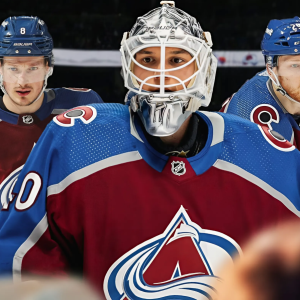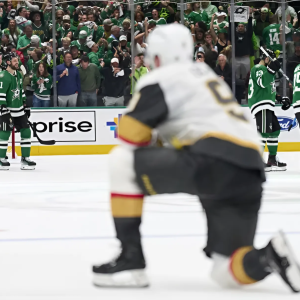
The past two offseasons, New York Rangers general manager Chris Drury has done his best to fill roster holes with very little room under the salary cap.
The 2023 offseason was a mixed bag of one-year, League-minimum contracts. The Rangers hit it big with backup goalie Jonathan Quick, so much so that they re-signed the three-time Stanley Cup champion to a contract extension before last season was even over. Defenseman Erik Gustafsson was solid signing as a third-pair defenseman. And Blake Wheeler was a highly respected leader, though one who brought diminished production on the ice before sustaining a serious knee injury.
Veteran bottom-six forwards Nick Bonino and Tyler Pitlick didn’t pan out and were quickly replaced.
The big move this offseason was acquiring Reilly Smith in a trade with the Pittsburgh Penguins since the Rangers could not afford any of the high-ticket right wings available in free agency. Sam Carrick was signed to center the fourth line after Barclay Goodrow was claimed off waivers by the San Jose Sharks.
They also decided not to re-sign Gustafsson, and signed Chad Ruhwedel to be the seventh defenseman. That means Zac Jones will almost assuredly get his first chance to be a lineup regular, replacing Gustafsson on the third pair.
It’s hard to argue with that logic. Jones is affordable — on his entry-level contract — and has put in his dues, playing just 69 NHL games the past four seasons. The 23-year-old showed growth last season, when he appeared in an NHL career-high 31 games, largely due to injuries sustained by Adam Fox, Jacob Trouba, Ryan Lindgren and Gustafsson. And the Rangers do need to find out exactly what they have in Jones and if he is good enough to be an NHL regular.
But there’s another low-cost move the Rangers could have made that had more upside and would have provided more depth insurance to their lineup.
Rangers missed out on discounted free agent Oliver Kylington

We don’t know if the Rangers had any interest in Oliver Kylington and/or if they had any substantial talks with the defenseman. But the Colorado Avalanche signed the 27-year-old to a one-year, $1.05 million contract Monday.
It was a savvy move by a Stanley Cup contender, one with a solid top four on defense, and a rebuilt bottom pair that includes Calvin de Haan and Erik Brannstrom battling for playing time with Kylington, who can play either the ride or left side.
Kylington was an excellent top-four defenseman in his last full NHL season, in 2021-22. He averaged 18:10 in ice-time that season, recorded 31 points (nine goals, 22 assists) in 73 games, was second on the Calgary Flames with 79 blocked shots and was a plus-34.
Perhaps what followed since turned off potential suitors in free agency, though. Kylginton missed all of the 2022-23 season and most of last season to deal with mental health issues. However, when he returned to the Flames in the second half of 2023-24, Kylington averaged 17:15 in ice time over 33 games and moved up to the top four after starting out on a bottom pair.
In short, he’d be a major upgrade for the Rangers. For only $300,000 more than what Ruhwedel costs them, Kylington would have, at minimum, provided serious competition for Jones, and at best would have been a better all-around defender that would have improved the entire group by being a regular.
And should Lindgren or Trouba, or anyone else on the blue line, be injured this season, Kylington could have easily moved up and Jones would’ve reprised his role sliding into the lineup as a quality seventh defenseman.
For sure, it’s a roll of the dice banking on a player who missed a year-and-a-half because of personal issues. But the cost of the contract he signed is minimal and Jones would be there to step in if/when needed.
There’s no question about whether Kylington can play at a high level, or more importantly, still can play at a high level. He showed that last season. The Rangers would’ve been deeper and more protected by signing Kylington rather than throwing all of their eggs into the Jones basket with Ruhwedel as the top reserve.





